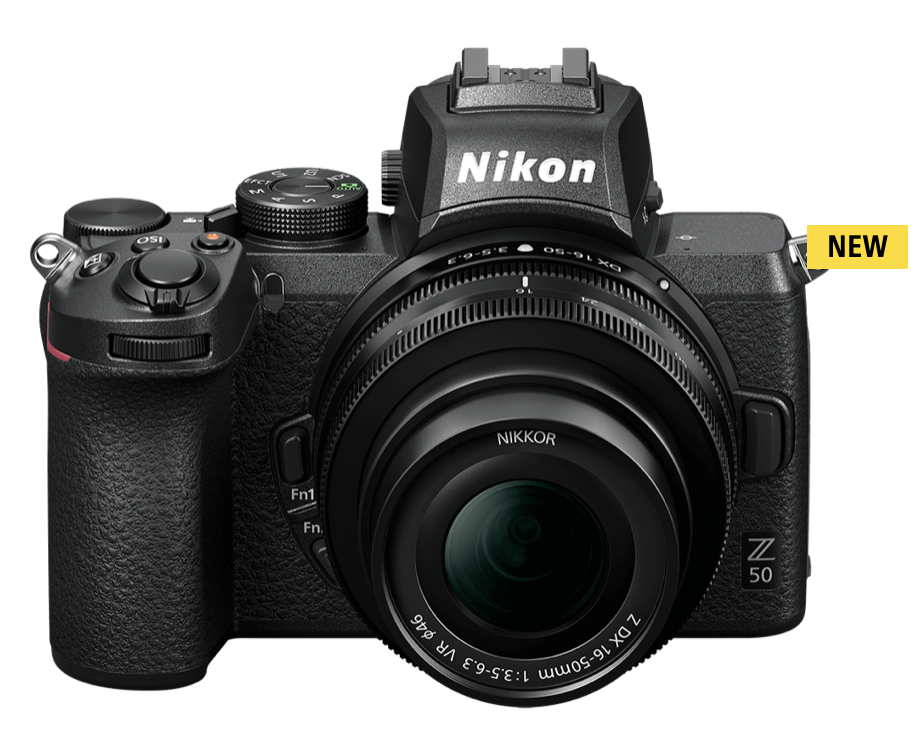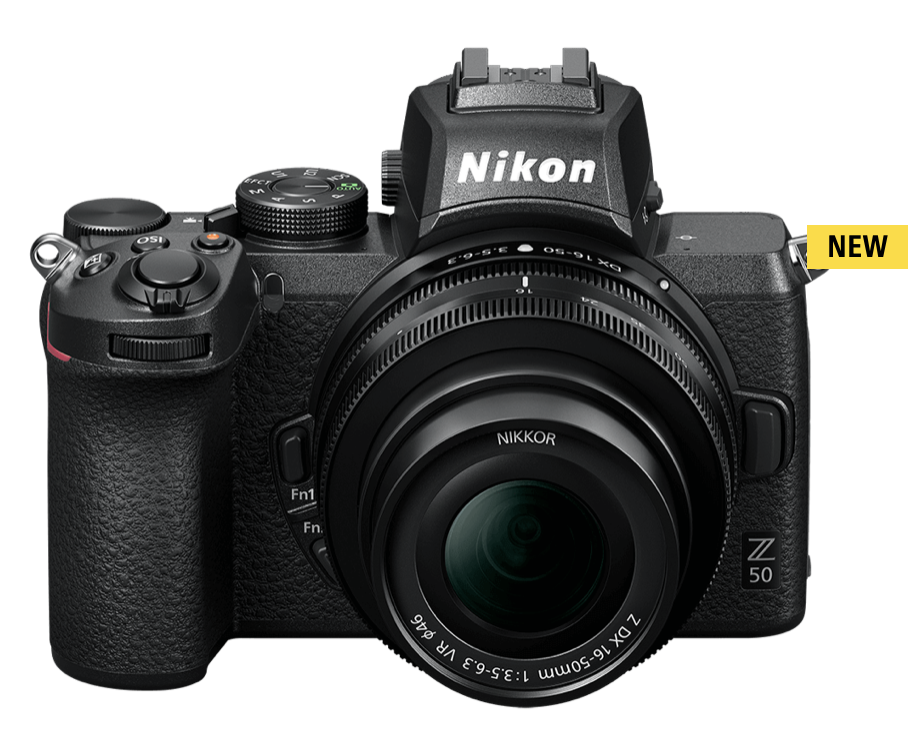Competition in the mirrorless APS-C market has largely been a race between Fujifilm and Sony, with Leica tagging along to the rear. In the past year, all the emphasis seems to have been on the new crop of full-frame cameras to the point w

The launch today of the Nikon Z50 is therefore of great interest. The deployment of the large Z mount is significant. Nikon follows Sony and Leica in introducing one mount to cover both formats. Sony started the ball rolling with the E-Mount, although it was introduced at a time when a full-frame version was probably not envisaged. As a result, the 43.6mm throat diameter of the E is on the borderline of suitability for a full-frame sensor and very fast lenses. Leica designed the L with a 48.8mm throat diameter while Nikon’s Z mount is the largest with a 53mm throat.
Such considerations haven’t stopped Sony dominating the large for the past few years, although I bet they wished they added a few millimetres to the mount diameter at the outset. They’re stuck with it now.
Full-frame designs
This is not the case with the L-Mount, or Nikon and Canon’s new designs. These mounts are designed first and foremost for full-frame use but also work well with APS-C. Leica designed the L-Mount specifically for the full-frame SL which was in development even before the TL was signed off. It just so happened that the TL hit the streets before the SL.
Now, however, the L-Mount forms the basis of a mature system, with five camera bodies (including the new Sigma fp) and a wide range of lenses at a number of interesting price points.
Leica fans are hoping that the CL will be given some TLC in the near future. The range of lenses, in particular, has stagnated since the launch of the T in April 2014, and we are due for some updates. Significantly, the entire system is currently lacking image stabilisation, either IBIS or ILS. While this has advantages in size and weight (especially in lens size) stabilisation is becoming a must-have feature.
Many are also hoping that Sigma will step in with an APS-C offering with crop bodies and lenses to offer a real alternative to Fuji and Sony and a cheaper option to the current sole L offerings, from Leica.
While Leica, Sony and now Nikon, offer both APS-C and full-frame systems using one mount, Panasonic and Fujifilm are rather stuck with a second lens mount that isn’t universal. Panasonic chose to leapfrog APS-C while retaining its m4/3 system in addition to L, Fuji has jumped in the opposite direction, opting for medium format and ignoring full-frame. The old X mount, with its 41.5mm throat diameter, is presumably unsuitable for full-frame and this could well explain Fuji’s decision to skip over full-frame.
However, both companies are now supporting two mount systems which is not ideal.
For now, Fuji is top of the APS-C tree. But with increasing competition from Sony and Nikon, could Fujifilm meet a strong challenge? Leica, as always, ploughs its own furrow and, largely because of the price structure, seems to exist in a parallel universe. But competition is hotting up in the APS-C world at a time when the overall market is shrinking. Something will have to give.


Like William I gave up on the SL and only held on to the Panasonic S1R for a few months before buying the NIKON Z7 – a beautiful small, light and versatile camera – with M and R lenses that go well with the thin sensor stack. Recently I branched out to the Zeiss Milvus 18/2.8 and 50/2.8 – they resolve beautifully and I don’t miss the SL lenses at all anymore. Not sure I’ll give up my CL though having the full set of TL lenses
Interesting view, Tony. I made the decision not to stick with Leica and the L-mount for pragmatic reasons concerning the focus of Macfilos. It’s all too easy to go off at a tangent and I feel this focus helps keep me on the straight and narrow. If I had a completely free hand I could well have been tempted to the Z7 or, even, the Z6. I cannot fault the S1 except in its size and I am generally happy with the combination of Leica and Panasonic.
Recently, however, I have been spending more time with the M10-D and Q2 and getting back into three cameras. Somehow, the -D is a breath of fresh air in its simplicity and ease of use.
I have a Nikon Z7. It is an excellent camera (particularly using Leica lenses via a Novoflex adaptor) and is the size that the Leica SL, Lumix S1 etc should be. I had Nikon SLRs and DSLRs for many years before I started using Leicas and now the only flappy mirror Nikons I have are an early 1960 F and an FM3A, the Alpha and Omega of fully manual Nikon SLRs. The introduction of this new model seems like an obvious thing to do, but there are still way too many digital camera models on the market and, increasingly, it is difficult to see a sustainable market share for all of them. Not our worry, though, and consumers should be glad that, for the time being, they have so many models to choose from.
William
“..Competition in the mirrorless APS-C market has largely been a race between Fujifilm and Sony, with Leica tagging along to the rear..”
? ..My first digital SLR, back in the mists of yesteryear, was a Canon APS 300D. Canon have been making APS digital cameras since the sensor chips were first available!
What’s all this about Leica, Sony “..and now Nikon, offer both APS-C and full-frame systems using one mount, Panasonic and Fujifilm are rather stuck with a second lens mount that isn’t universal..”?
Canon’s EF lenses have been available for APS cameras since Canon made the APS (..film!..) EOS IX back in 1996..!
Canon’s EF-S lenses have fitted only their APS cameras ..i.e; are not “backwards compatible” with the full-frame models ..neither film nor digital, because they don’t cover the full 36x24mm frame.. but Canon’s EOS EF (full-frame) lenses – first sold in 1987 have fitted every Canon APS camera since ’96 ..that’s 23 years!
Wake up at the back there!
..and Nikon, of course, have also been making APS cameras for absolute years. Nikon’s original D1 – of 1999 – had/has an APS sensor, and the normal Nikon mount from 1959 ..Gulp!
Did I miss something? ..did I miss the word “mirrorless”..? Mea Culpa!
..b-b-but there have been all those little Canon EF-M mirrorless APS-C cameras for many, many years!
I was referring specifically to the mirrorless camera market, not the DSLR market which is not relevant to the article.
Sorry ..must be jetlag.
M4/3 is not at any risk as the lenses are tiny compared to APS-C and full frame. I love my G9 system in concert with my more limited L-mount system. The APS-C systems will probably have much slower equipment rollout due to the emphasis being on full frame. Medium format will continue to be a niche market as the glass is so big and slow in aperture.